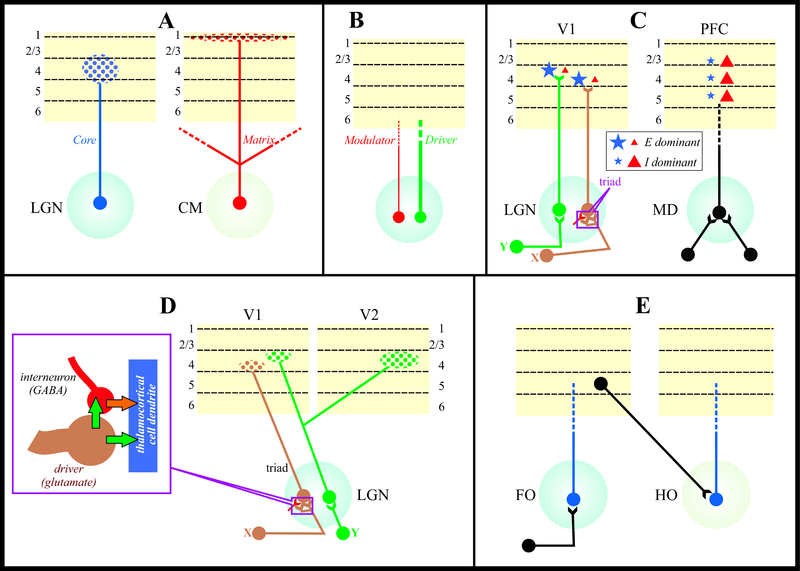Figure 1.
Examples of various classification attempts that include partial descriptions of thalamocortical motifs. A: Core and matrix (output characteristics). The geniculocortical projection, an example of a core system, mainly targets middle cortical layers in a highly topographical manner (left), whereas the projection from the centromedian nucleus, an exemplar of a matrix system, diffusely targets upper cortical layers, chiefly layer 1 (right) and typically innervates multiple cortical areas. B: Drivers and modulators (output characteristics). Thalamocortical afferents can be either driver or modulator. C: LGN vs MD (input and output characteristics), in addition to the input differences shown in D, LGN X and Y cells receive input from very few retinal axons, often only one, and their outputs chiefly innervate excitatory cells in V1 (left), whereas some MD neurons, which receive significant convergent driver input, predominantly activate inhibitory cells in prefrontal cortex (PFC, right). D: X and Y streams through the cat’s LGN (both input and output characterization). On the input side, retinal Y axons form simple synapses onto dendritic shafts, whereas retinal X axons form triadic synaptic complexes (inset). On the output side, X axons innervate only V1, chiefly in the lower half of layer 4, whereas Y axons innervate the upper half of layer 4 and branch to innervate V2 as well. E: First and higher order (FO and HO; predominantly input characteristics) thalamocortical circuits. Driver input to FO cell derive from a a subcortical source (i.e., retina to LGN), whereas HO thalamocortical cells receive driver input from layer 5 of cortex (e.g, pulvinar from layer 5 of V1).

